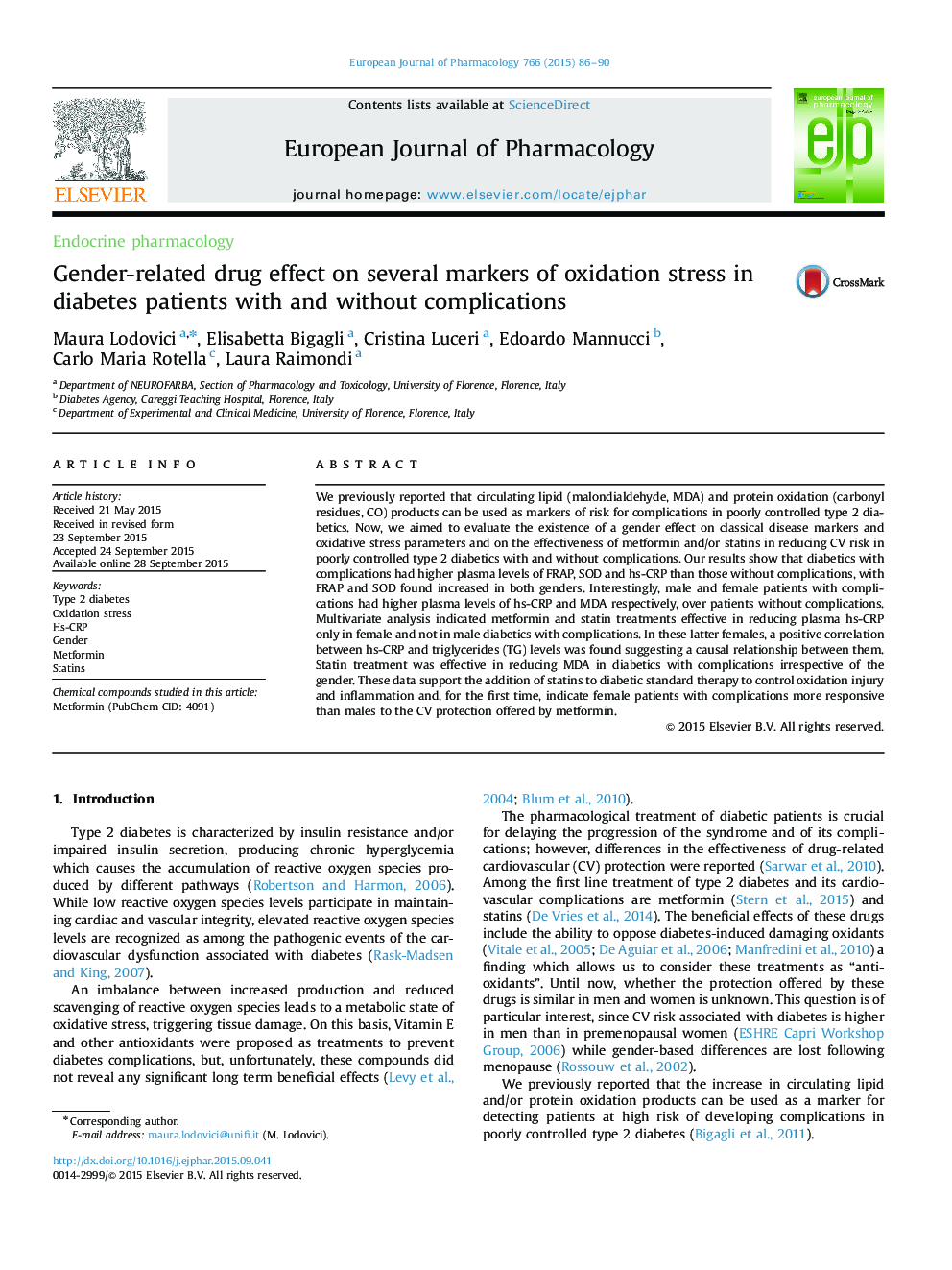| Article ID | Journal | Published Year | Pages | File Type |
|---|---|---|---|---|
| 2531227 | European Journal of Pharmacology | 2015 | 5 Pages |
We previously reported that circulating lipid (malondialdehyde, MDA) and protein oxidation (carbonyl residues, CO) products can be used as markers of risk for complications in poorly controlled type 2 diabetics. Now, we aimed to evaluate the existence of a gender effect on classical disease markers and oxidative stress parameters and on the effectiveness of metformin and/or statins in reducing CV risk in poorly controlled type 2 diabetics with and without complications. Our results show that diabetics with complications had higher plasma levels of FRAP, SOD and hs-CRP than those without complications, with FRAP and SOD found increased in both genders. Interestingly, male and female patients with complications had higher plasma levels of hs-CRP and MDA respectively, over patients without complications. Multivariate analysis indicated metformin and statin treatments effective in reducing plasma hs-CRP only in female and not in male diabetics with complications. In these latter females, a positive correlation between hs-CRP and triglycerides (TG) levels was found suggesting a causal relationship between them. Statin treatment was effective in reducing MDA in diabetics with complications irrespective of the gender. These data support the addition of statins to diabetic standard therapy to control oxidation injury and inflammation and, for the first time, indicate female patients with complications more responsive than males to the CV protection offered by metformin.
